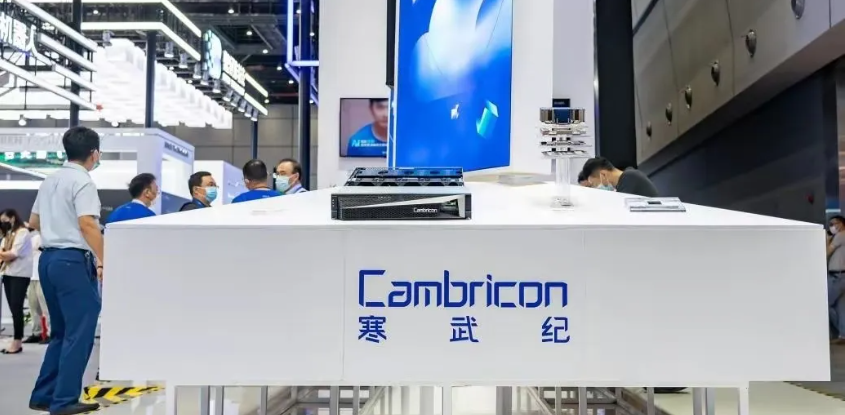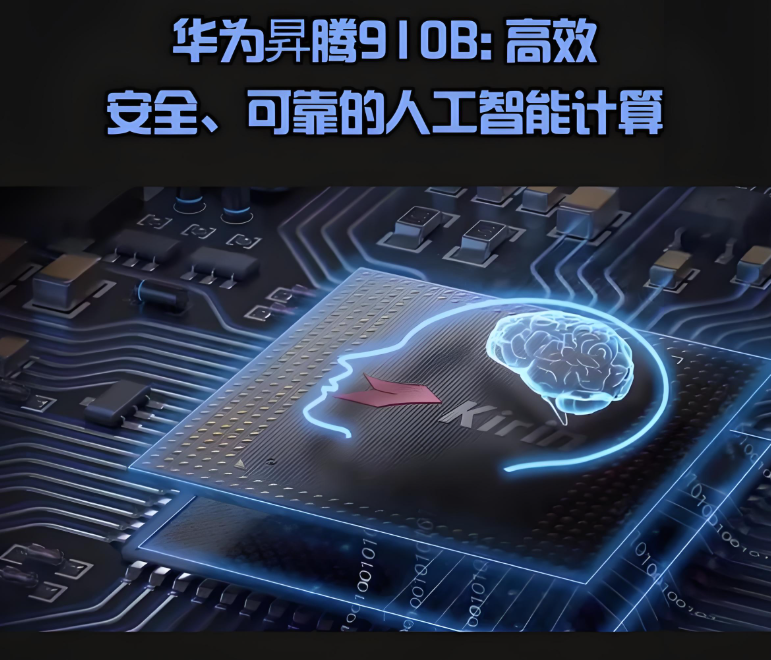1. Market Landscape: Accelerated Domestic Substitution, Formation of a Duopoly
“Under the U.S. chip blockade, the Chinese AI computing market is surprisingly divided by these two companies, capturing 35%!”
- In Q1 2025, the domestic AI chip substitution rate soared to 45%, with Huawei Ascend and Cambricon together holding 35% of the cloud market share, surpassing the combined total of AMD and Intel.
- Cambricon’s revenue in Q1 2025 reached 1.111 billion yuan, a staggering year-on-year increase of 4230%, with a net profit of 355 million yuan, marking a historic turnaround; Huawei Ascend’s shipment target for 2025 is 800,000 units, more than 10 times the growth compared to 2024.

Market Drivers:
- Policy Benefits: The U.S. chip export controls are forcing domestic substitution, with the government prioritizing AI computing infrastructure under the “new productive forces” strategy.
- Technological Breakthroughs: The performance of Cambricon’s 7nm Siyuan 590 chip reaches 82% of NVIDIA’s A100, while Huawei’s Ascend 910C adopts SMIC’s N+2 process with a yield exceeding 40%.
- Explosive Demand: China’s AI computing expenditure is expected to exceed 900 billion yuan in 2025, with 70% allocated for GPU procurement, allowing domestic chips to capture a 630 billion yuan market.

2. Technical Route Comparison: Architecture Ecosystem vs. Full-Stack Collaboration
“Cambricon’s self-developed architecture focuses on single-point breakthroughs, while Huawei’s Ascend ecosystem dominates—who is superior?”
| Dimension | Cambricon | Huawei Ascend |
|---|---|---|
| Core Technology | Self-developed instruction set + microarchitecture (Siyuan series) | Full-stack self-development (Ascend chips + Kunpeng servers + CANN framework) |
| Performance Metrics | Siyuan 590 computing power 1000 TOPS, energy efficiency improved by 40% | Ascend 910C single card computing power 900 TFLOPS, cluster expansion up to 1024 cards |
| Ecological Barriers | Toolchain compatible with over 160 third-party large models | Ascend community open-source models deeply optimized, covering government/finance/healthcare |
| Manufacturing Risks | 7nm reliant on TSMC, threatened by U.S. sanctions | SMIC’s N+2 process for domestic mass production, safer supply chain |
Technical Trend Predictions:
- Architectural Revolution In 2026, integrated storage and computing chips will break traditional architectures, improving energy efficiency by another 5-8 times, with Cambricon already laying out Chiplet technology.
- Process Breakthrough SMIC’s 5nm multi-patterning technology has a production cost 47% higher, but provides a window for validating domestic equipment.
3. Industry Chain Overview: Key Positions from Design to Application
Industry Chain Map (Simplified Version):
- Upstream Design Huawei Ascend (Tuwei Information), Cambricon, Haiguang Information (breaking through 1000 TOPS computing power).
- Midstream Manufacturing SMIC (N+2 process), Hua Hong Semiconductor (mature process orders extend to 2026).
- Packaging and Testing Support Changdian Technology (core supplier for Huawei), Tongfu Microelectronics (partner of Cambricon).
- Equipment Materials Northern Huachuang (5nm etching machine), Anji Technology (polishing liquid market share 7%).
5. Scene Implementation: Intelligent Driving (Horizon), Cloud Computing (Alibaba Cloud procured over 500 million yuan from Cambricon)
Investment Logic:
- Short-term: Focus on performance explosion targets (Cambricon’s inventory increased by 980 million yuan quarter-on-quarter, indicating continuous order growth).
- Long-term: Bet on ecosystem builders (Huawei Ascend has connected to 30 provincial intelligent computing centers)
4. Risks and Opportunities: The Bright and Dark Lines of a Trillion Market
Risk Warnings:
- Geopolitical
The U.S. may escalate the DUV lithography machine ban, making SMIC’s mature process a “lifeline”.Technological Gap: The gap between Cambricon’s software ecosystem and CUDA is significant, with high customer migration costs.
Strategic Opportunities:
- Policy Support
Semiconductor equipment procurement subsidies can reach up to 30%, with lithography and etching machines as key focuses.
- Technological Leap
Photonic computing chips are expected to complete validation by 2025, and quantum computing may disrupt the industry landscape.
Fan Benefits and Interaction
Limited-Time Benefits:
Reply “Chip” in the backend, to receive the complete list of core targets for AI chips in 2025 (including valuation calculations and risk warnings) ↓
Interactive Topic:
“Who do you think will break through NVIDIA’s blockade first, Huawei Ascend or Cambricon? Comment below for a chance to win an industry research report!”